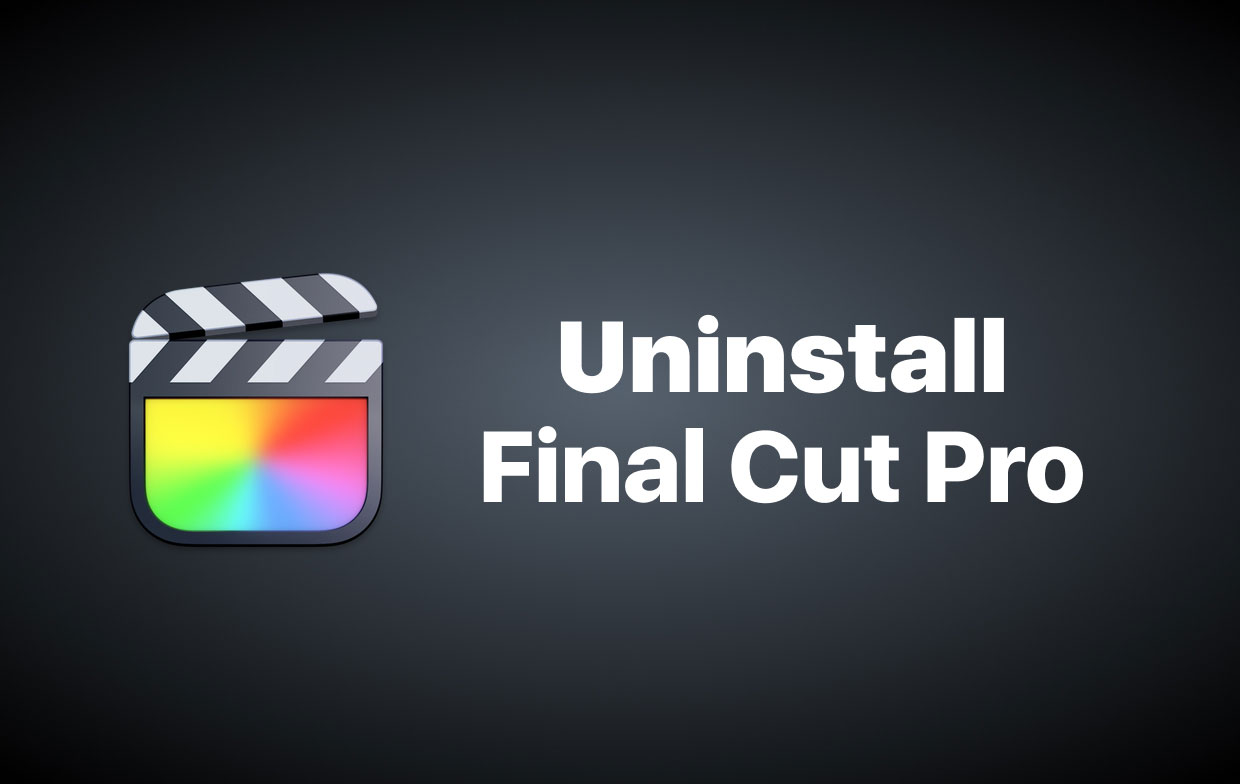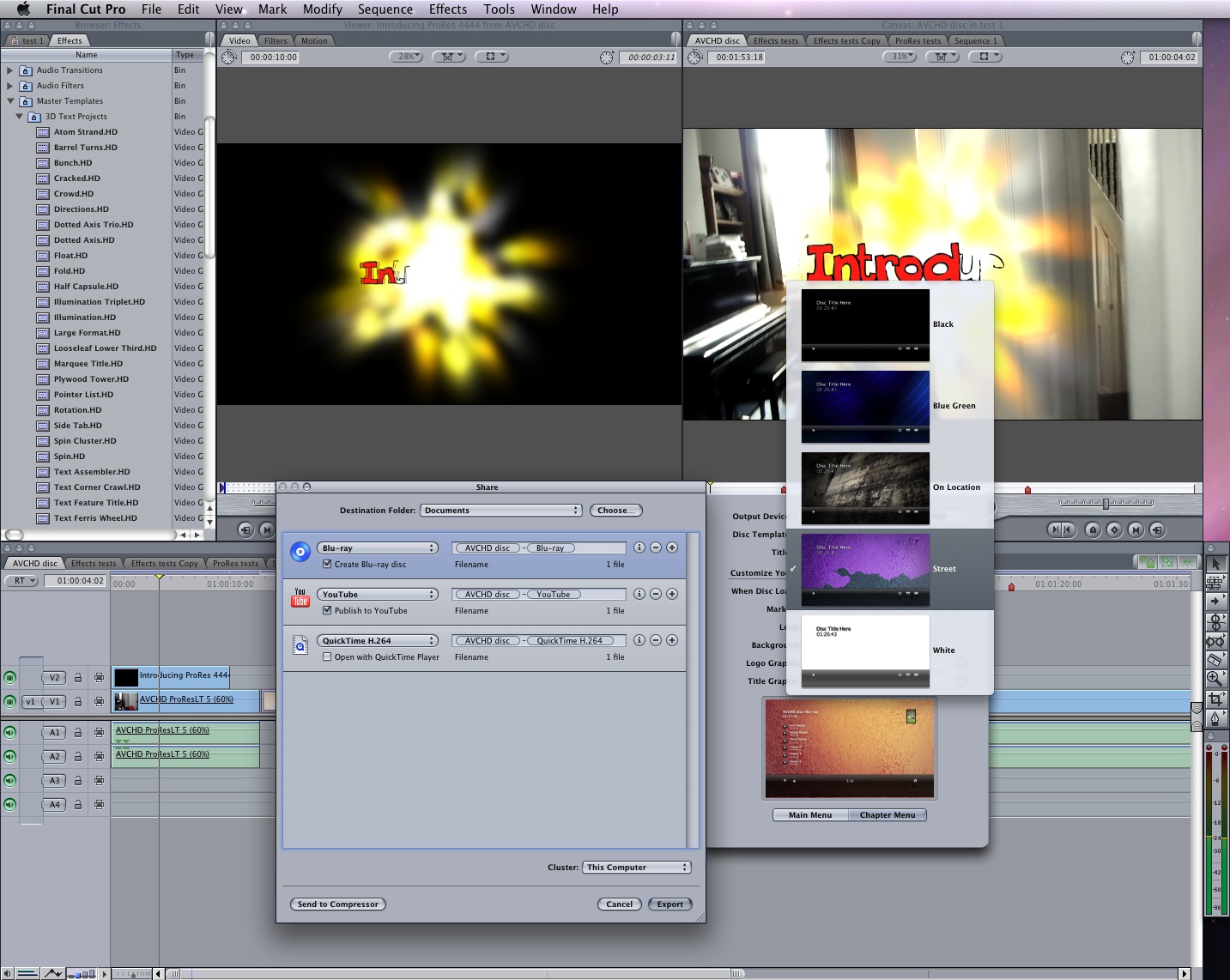

- #What disk format for mac fcp 3 how to
- #What disk format for mac fcp 3 mac os
- #What disk format for mac fcp 3 software
(Just to make things nice and confusing, once 3.5″ floppy drives were retired, Apple repurposed the “SuperDrive” name for its CD-ROM drives, urg.)

The SuperDrive had the capacity to read both variable and fixed-speed formatted disks, as well as IBM formatted disks on a Mac. To address this issue, Apple began shipping its computers with what they called the “SuperDrive” (not to be confused with the 120 MB “SuperDisk” that came out in 1997), first with the Apple IIe and later with the Macintosh II. Moving to a fixed-speed floppy drive meant backward compatibility issues for Apple, as the image at the top of this post suggests.
#What disk format for mac fcp 3 software
Thus a present-day USB 3.5″ floppy disk drive is unable to read 400 KB (SS/DD) and 800 KB (DS/DD) Mac floppy disks because it uses a fixed-speed spindle and is unable to read floppy disks created with a variable-speed drive. This is also the reason that Windows software tools such as Omniflop are unable to read 400/800 KB Mac floppy disks. But by the time the 1.44 MB floppies arrived, Apple was tired of being the odd-man-out, and adopted a fixed-speed spindle for its HD disks. In the 1980s an extra 40k or 80k was nothing to be scoffed at, and Apple’s variable-speed drive was clearly the superior technology. With this technology, Apple was able to eke out more space on SS/DD and DS/DD disks compared to their IBM counterparts, 400 KB to 360KB and 800 KB to 720 KB respectively. Until the 1.44 MB floppy disks came out, Apple used a technology called a variable-speed spindle in their floppy drives, where as IBM-compatible systems used a fixed-speed drive. There’s a reason for this other than a general bias against Macs. Variable-Speed vs Fixed-Speed Floppy Drives, or, Why Your USB Floppy Disk Drive Can’t Read a DS/DD Mac Floppy DiskĪs I detail in my digital curation workstation post, a USB 3.5″ floppy disk drive will read both IBM formatted (Microsoft FAT12 file system) 720 KB and 1.44MB diskettes, but only 1.44 MB if they are Mac formatted (HFS).
#What disk format for mac fcp 3 mac os
(The HFS+ file system originated with Mac OS 8.1, but because Apple moved away from floppy disks around that time, it is unlikely that you’ll see HFS+ formatted floppy disks.) I break all this down in the table below. All 800 KB and 1.44 MB would be formatted with HFS. What’s more, the 400 KB disks could have been formatted with either the short-lived Macintosh File System (MFS) or the more common Hierarchical File System (HFS). This presents a challenge because the same 3.5″ hard plastic diskette could have been used by a computer from 1985 or 1995, and in most cases with no indication about whether it’s from a Mac, IBM PC, Amiga, or other.Īpple alone used the 3.5″ floppy diskette for disks of three sizes: 400 KB (single sided, double density, or SS/DD), 800 KB (double sided, double density, or DS/DD), and 1.44 MB (double sided, high density, or DS/HD, or more commonly, just HD). The Wikipedia entry on floppy disk formats is a great resource (bookmark it!), but even as exhaustive as it is, it’s still incomplete and doesn’t list all of the various computers and file systems that used the 3.5″ floppy disk. One of the primary challenges of capturing data from floppy disks (either 5.25″ or 3.5″) is that the same form-factor was used across multiple generations of disk sizes and file systems. In a way this is a followup to my article a few years ago on building a digital curation workstation and the blog post I wrote for MITH last year on using BitCurator to capture and access data on server hardware.įirst let me explain the nature of the problem.


(Quick note: though 5.25″ floppy disks were used by the Apple II, “Macs” only ever used the 3.5″ diskettes, so if I say “Mac floppy disk,” I mean a 3.5″ diskette.) What follows are some recommendations based on my findings. While these disks are otherwise uncommon, because Macs were frequently associated with the works of “creatives,” they have an outsized importance in the world of digital archives, and thus merit some special attention. I’m a fan of the Kryoflux and recommend it regularly, but it does have several limitations, especially when it comes to cost, so I’ve been looking for alternative ways to access HFS formatted disks. Variations on this question include: “why can’t my USB 3.5” floppy disk drive read old Mac disks?” or, “How do I access double sided double density (DS/DD) Mac disks?” or, “I have a stack of 3.5” floppy disks that neither Windows nor Linux will recognize, what gives?” However the question is formed, a common recommendation from the community is to use a Kryoflux controller card to capture the data from the drive.
#What disk format for mac fcp 3 how to
One of the more common questions asked on the various digital curation forums is how to access HFS formatted 3.5” floppy disks. A Mac HD 3.5″ floppy disk: Not compatible with 400/800KB disk drives.


 0 kommentar(er)
0 kommentar(er)
